Grand Canyon Limited 2012
Part III:
Grand Canyon and return to LA
By Peter Limper
| On the third morning of the trip, passengers boarded at Williams for an 8:15 AM departure for the Grand Canyon. |
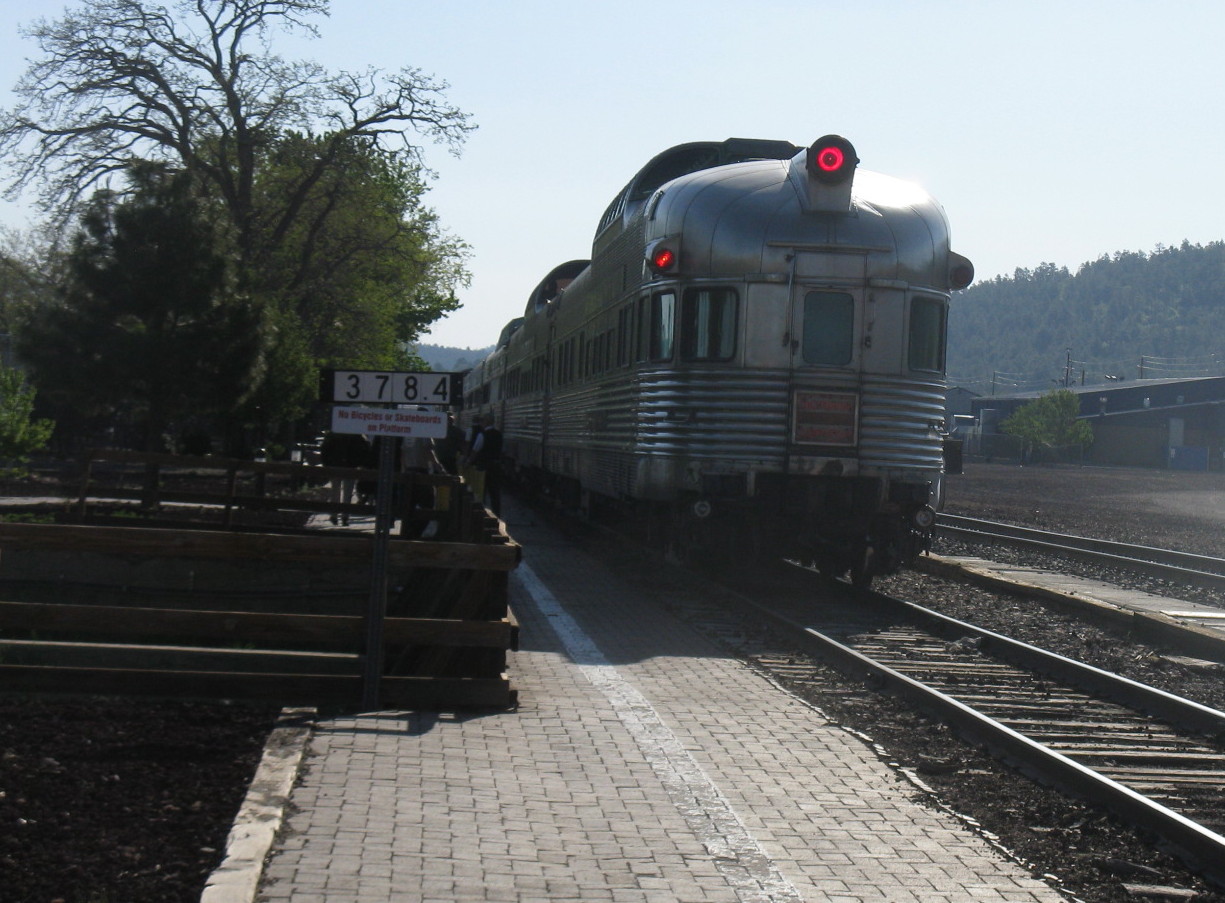 |
| The Grand Canyon Railway runs for 64 miles over a former ATSF branch from Williams to the rim of the Canyon. |
| Our train was double headed by 3751 and GCR 4960. |
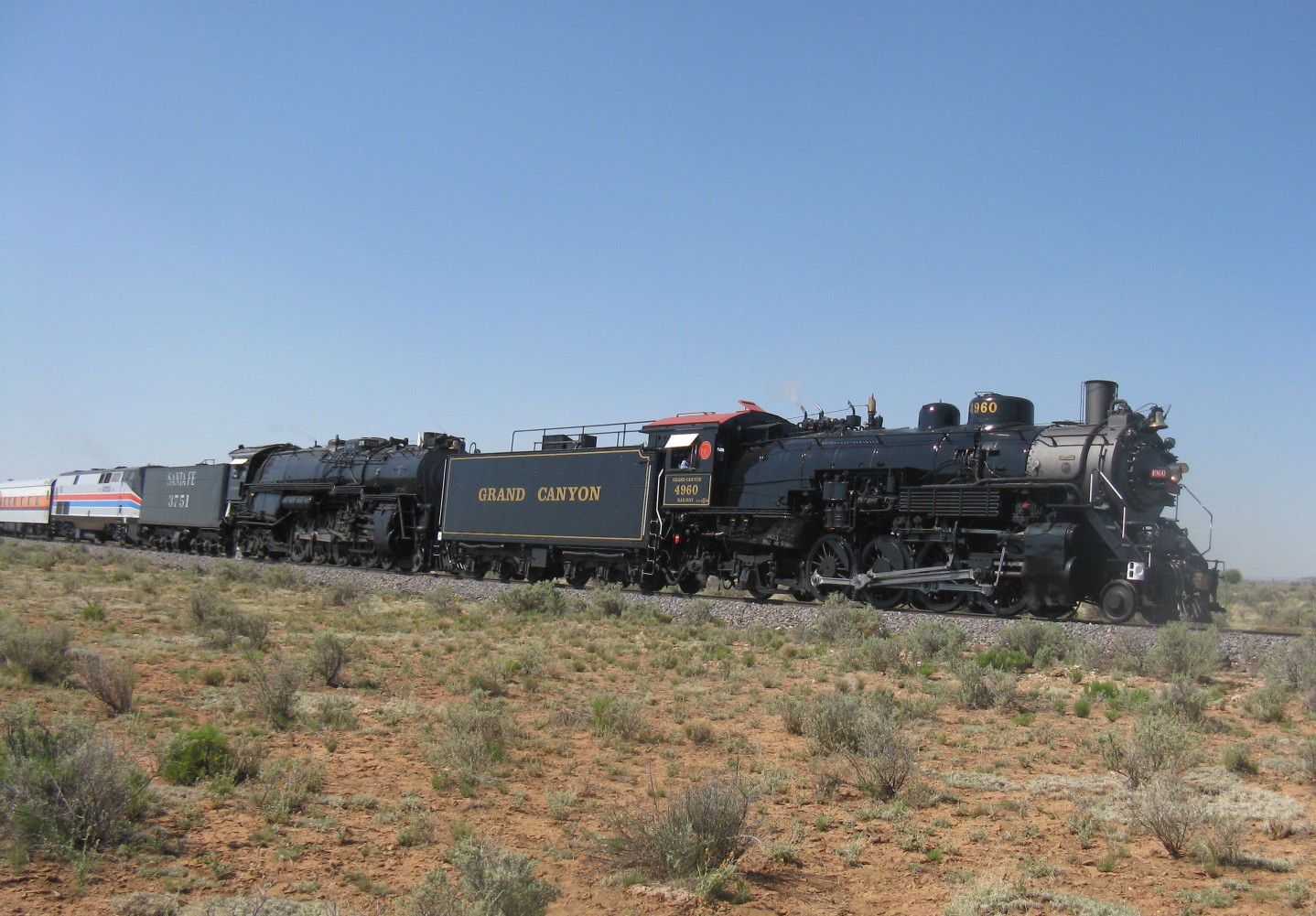 |
| 4960 was built by Baldwin in 1923 (just four years before 3751) for the CB&Q. The engine has been extensively rebuilt for service on the GCR, and now burns waste cooking oil in the firebox. |
| I last rode behind 4960 when it was in CB&Q excursion service in the early 1960’s. This shot by Mike Condren, taken on a dark cloudy day in 1966 in Hannibal MO, shows how the engine appeared then. |
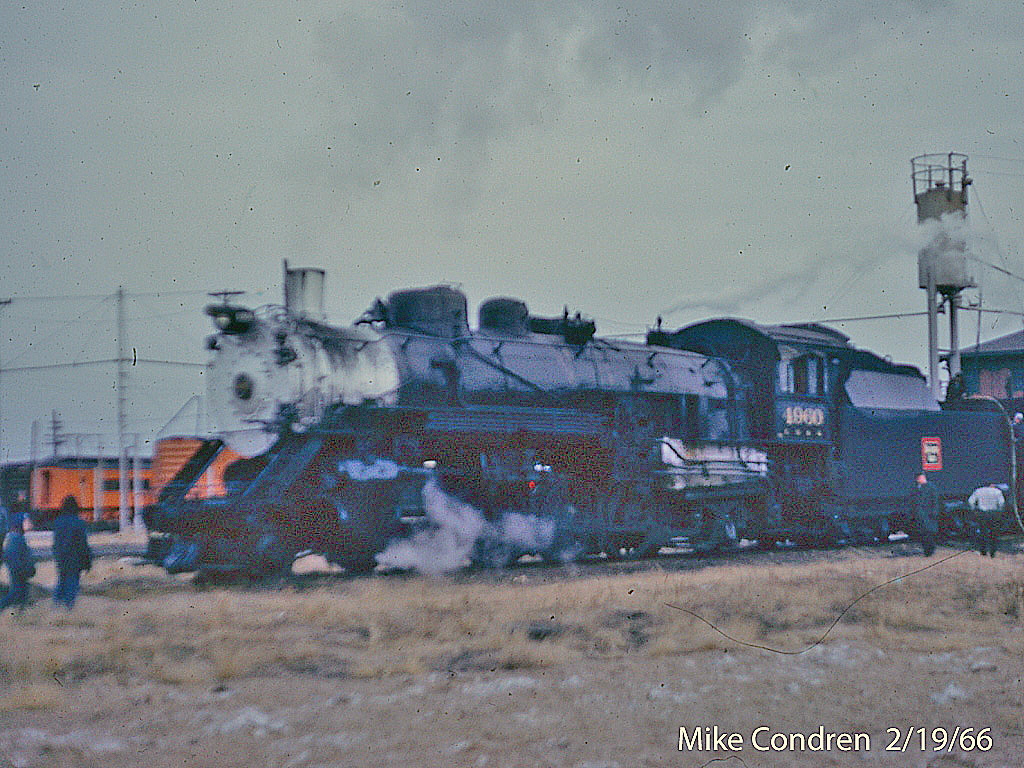 |
| Photographers lined up for a run-by on the out-bound trip. |
| After backing up, the engines raced toward the photography line for a rare 2012 image of a steam double header at speed. |
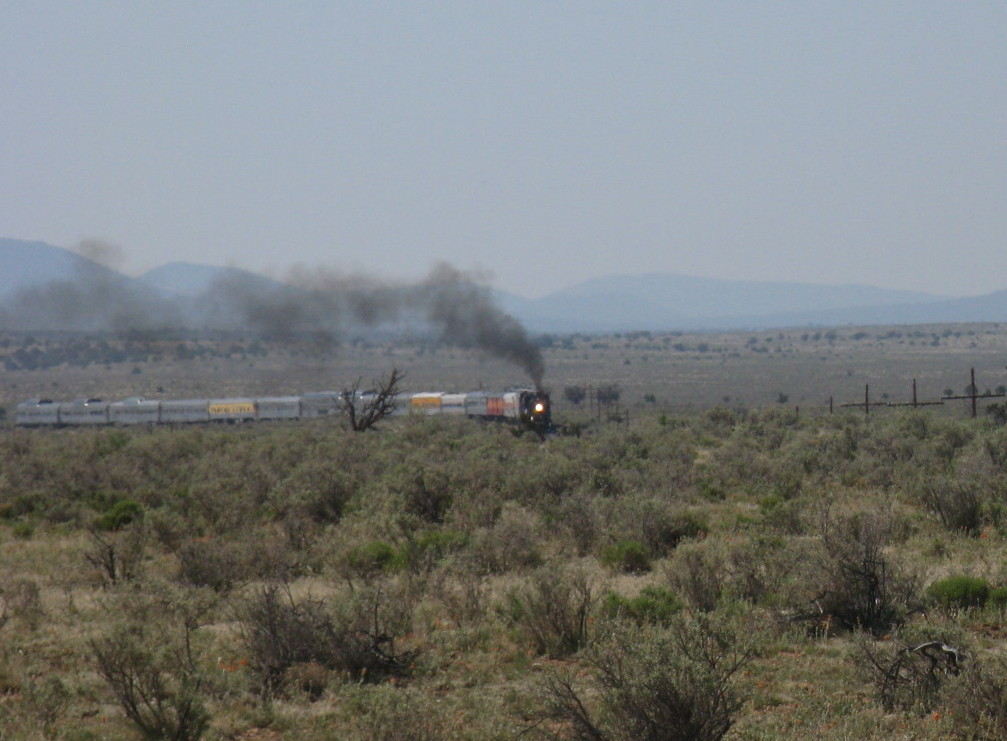 |
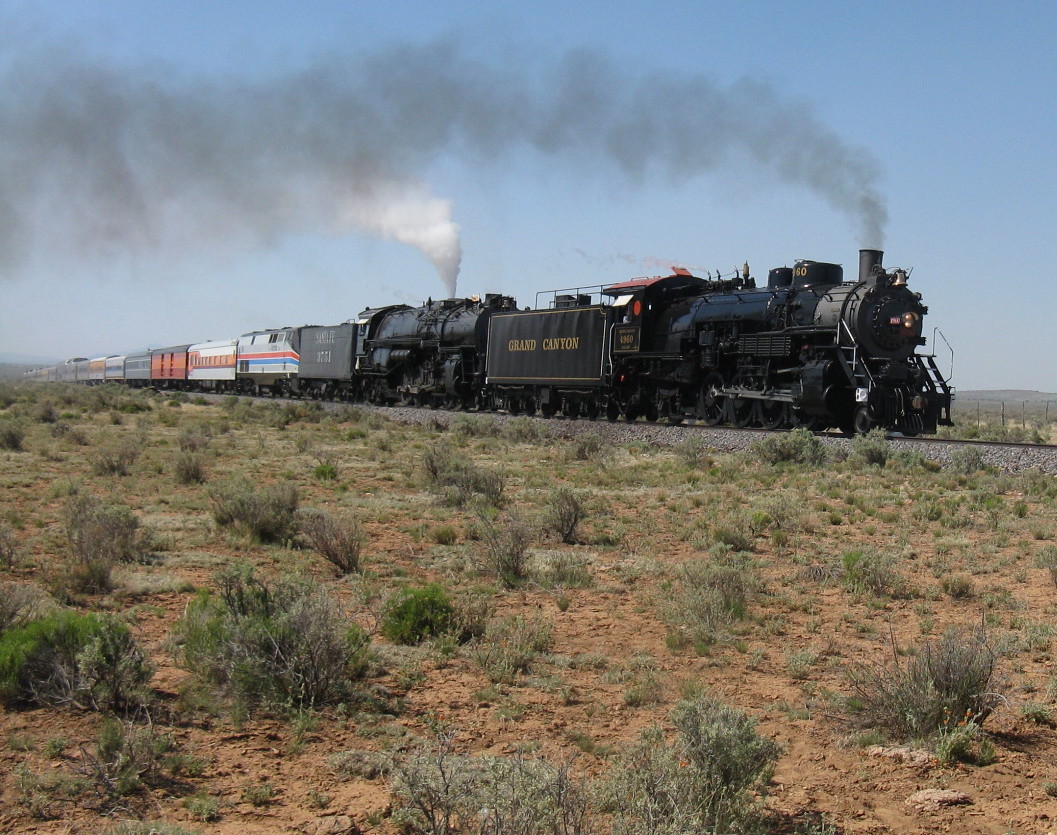 |
| After arriving at the Grand Canyon station, 3751 and 4960 were cut off for turning and servicing. |
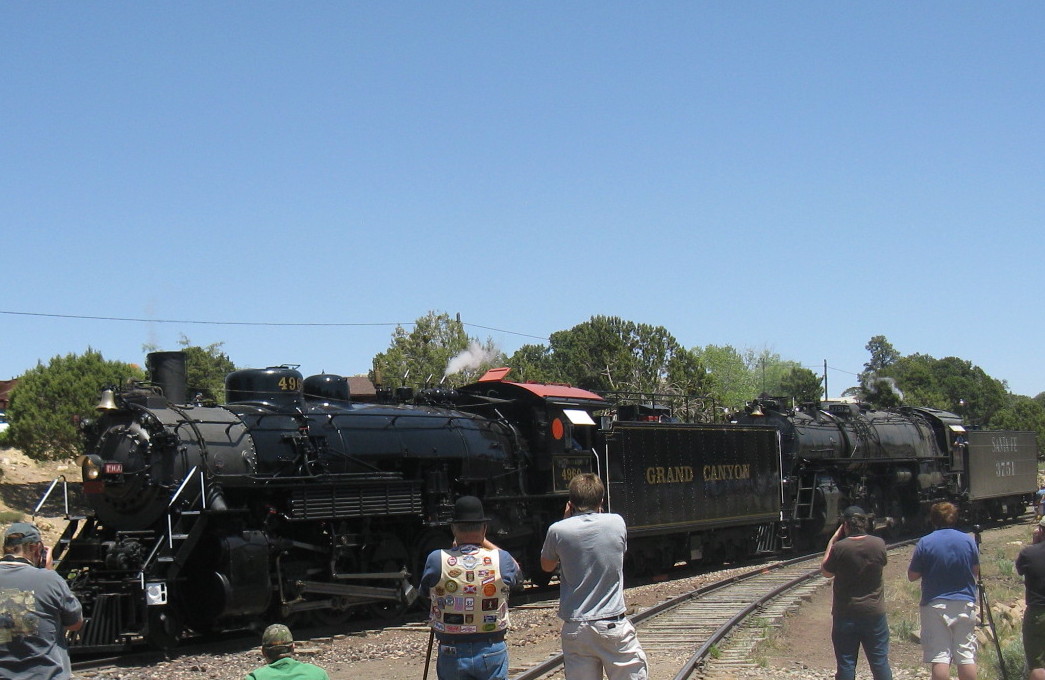 |
| As I prepared to make the short walk to the Canyon rim, a mule “train” crossed the tracks in front of me. |
| Like many others, I was overwhelmed by the size and grandeur of the Canyon, and felt frustrated by my inability to do photographic justice to the scenes; only a few of my pictures are included here. |
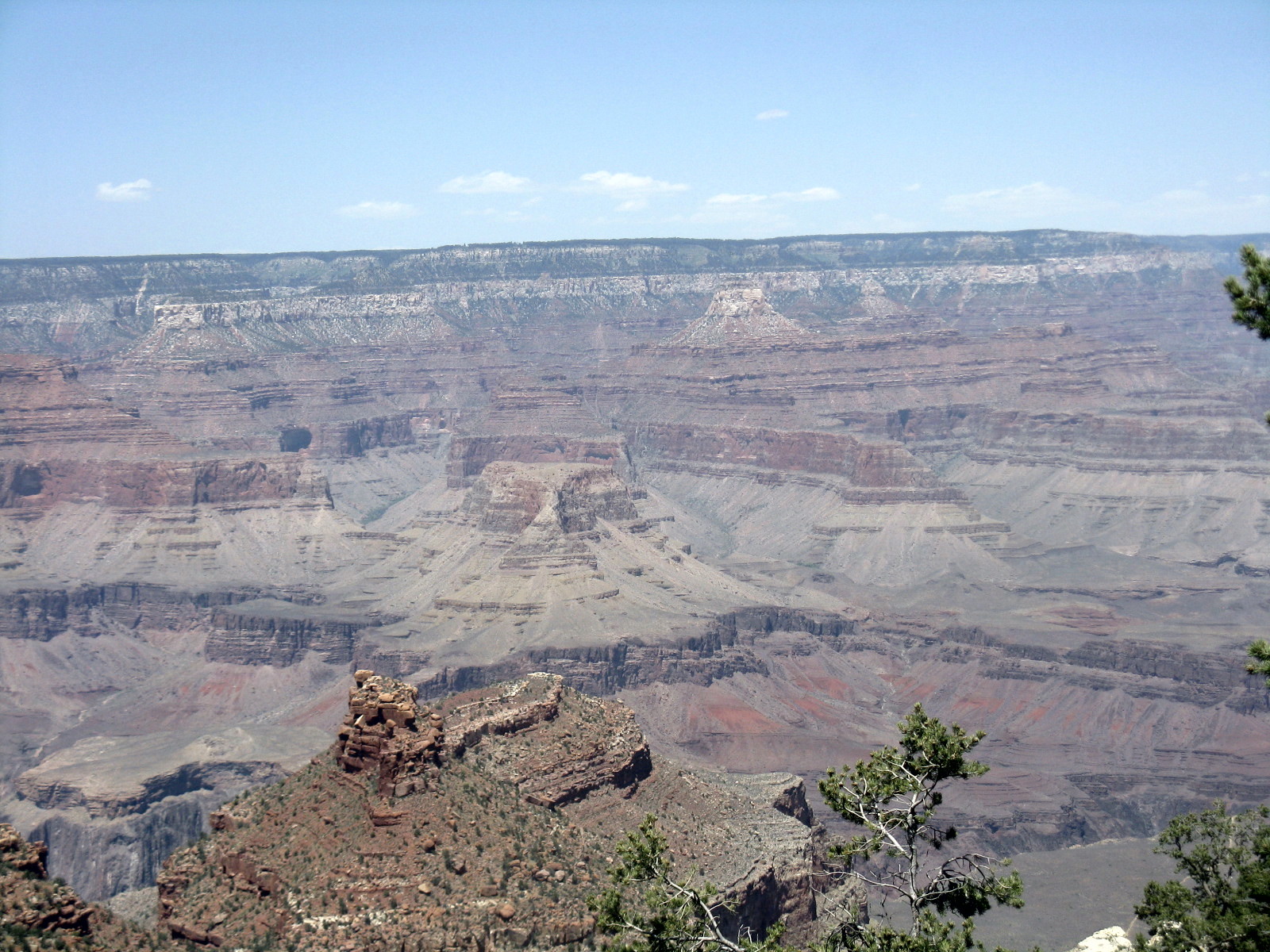 |
| Even before the Grand Canyon became a national park, the Santa Fe was developing the area for tourists together with its associated company Fred Harvey. Two structures designed by long-time Fred Harvey architect Mary Coulter are the El Tovar restaurant and lodge, and Lookout Studio (now a gift shop). |
| After a late lunch, I returned to the Grand Canyon railroad station. The line’s regular daily train departed for Williams as passengers for the steam special descended the steps. Almost all operations on the GCR are now dieselized, and 4960 is used only a few times a year. |
| The GCR has a number of coaches rebuilt from Budd RDC cars; note the patches on the car roof at left where the humped radiators have been removed. |
| After the regular train departed, the cars of the Grand Canyon Limited were backed into place, and the steam locomotives prepared to couple on. |
| The train made its way back to Williams through a diverse landscape of desert and pine forest. |
| Another run-by gave a final opportunity to photograph the double-header. |
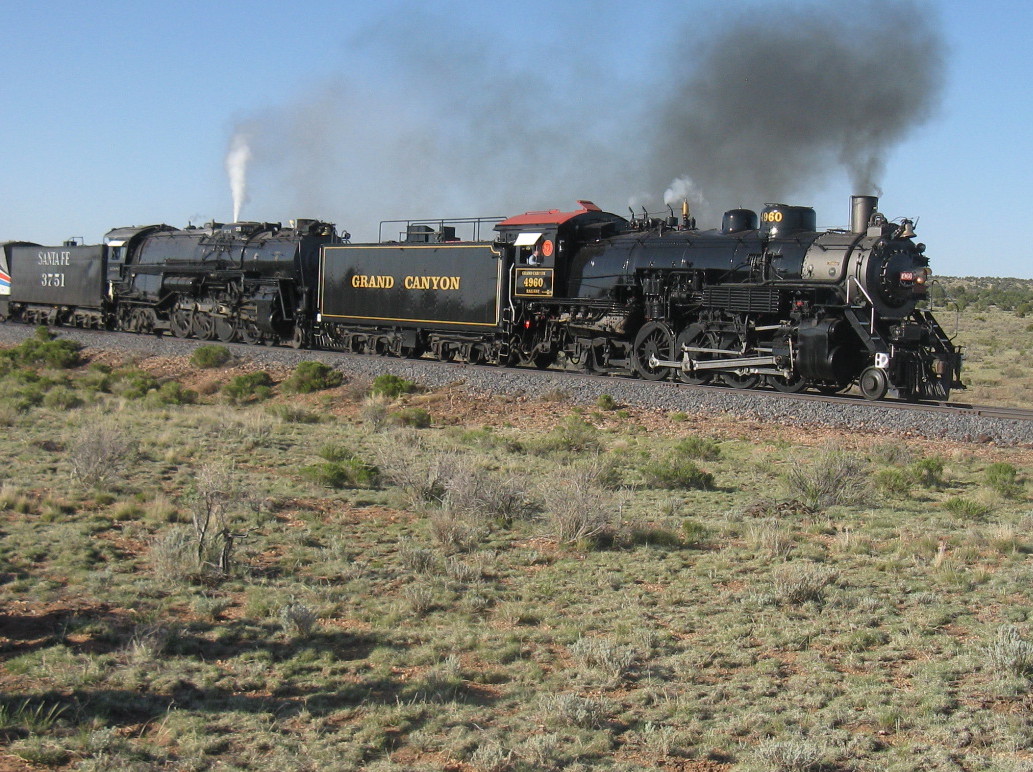 |
| The train returned to Williams about 8PM; the steam locomotives were cut off a few miles from the depot and the one Amtrak diesel on this part of the trip pulled the cars the reminder of the way. |
| On Friday, June 18, the Grand Canyon Railway’s regular train loaded at the substantial station at Williams and departed for the South Rim. |
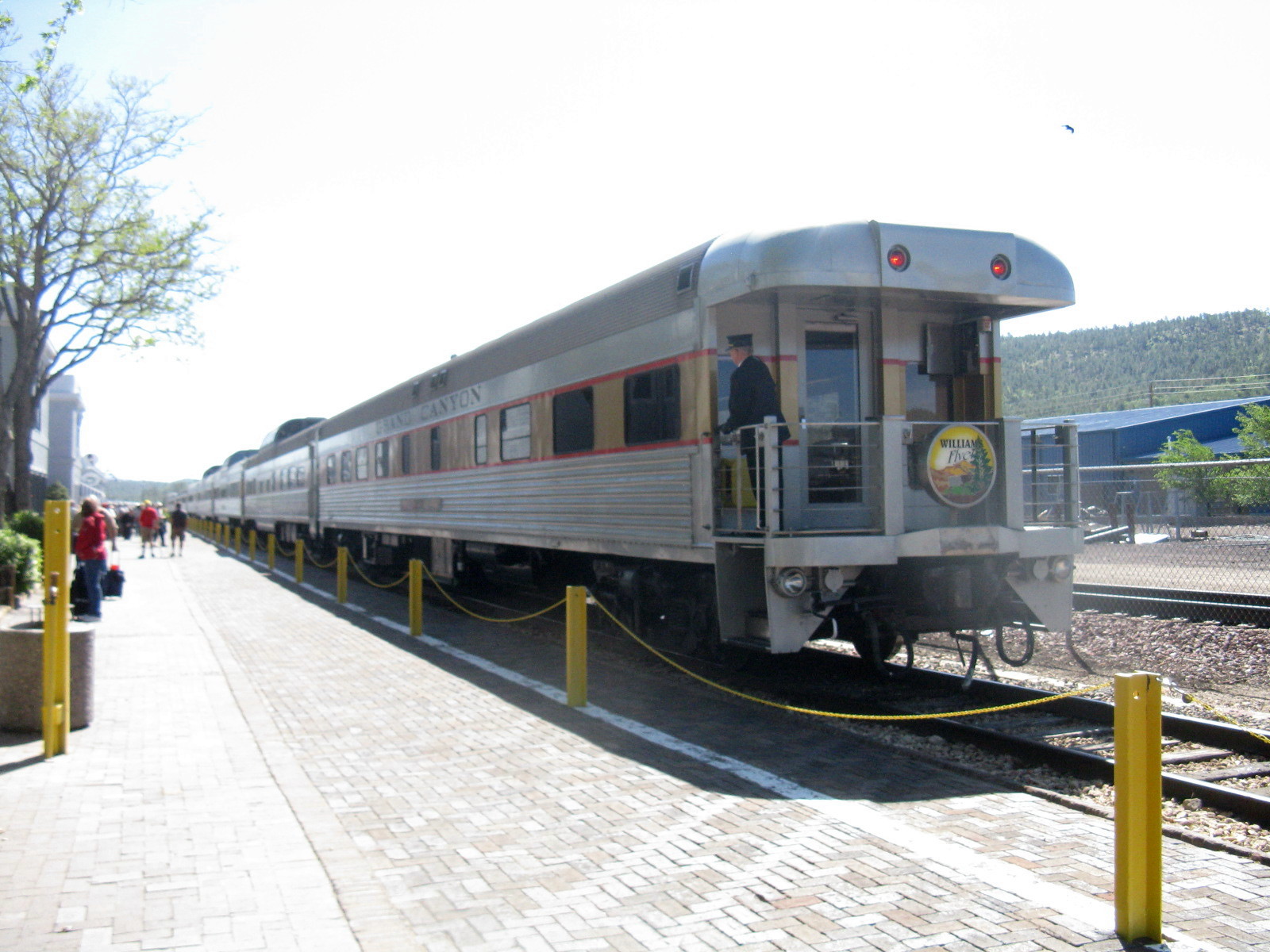 |
| With the platform track clear, 3751 pulled the Grand Canyon Limited into the station for boarding. (The train had spent Thursday at Williams, while passengers had the opportunity for bus tours of the surrounding area.) |
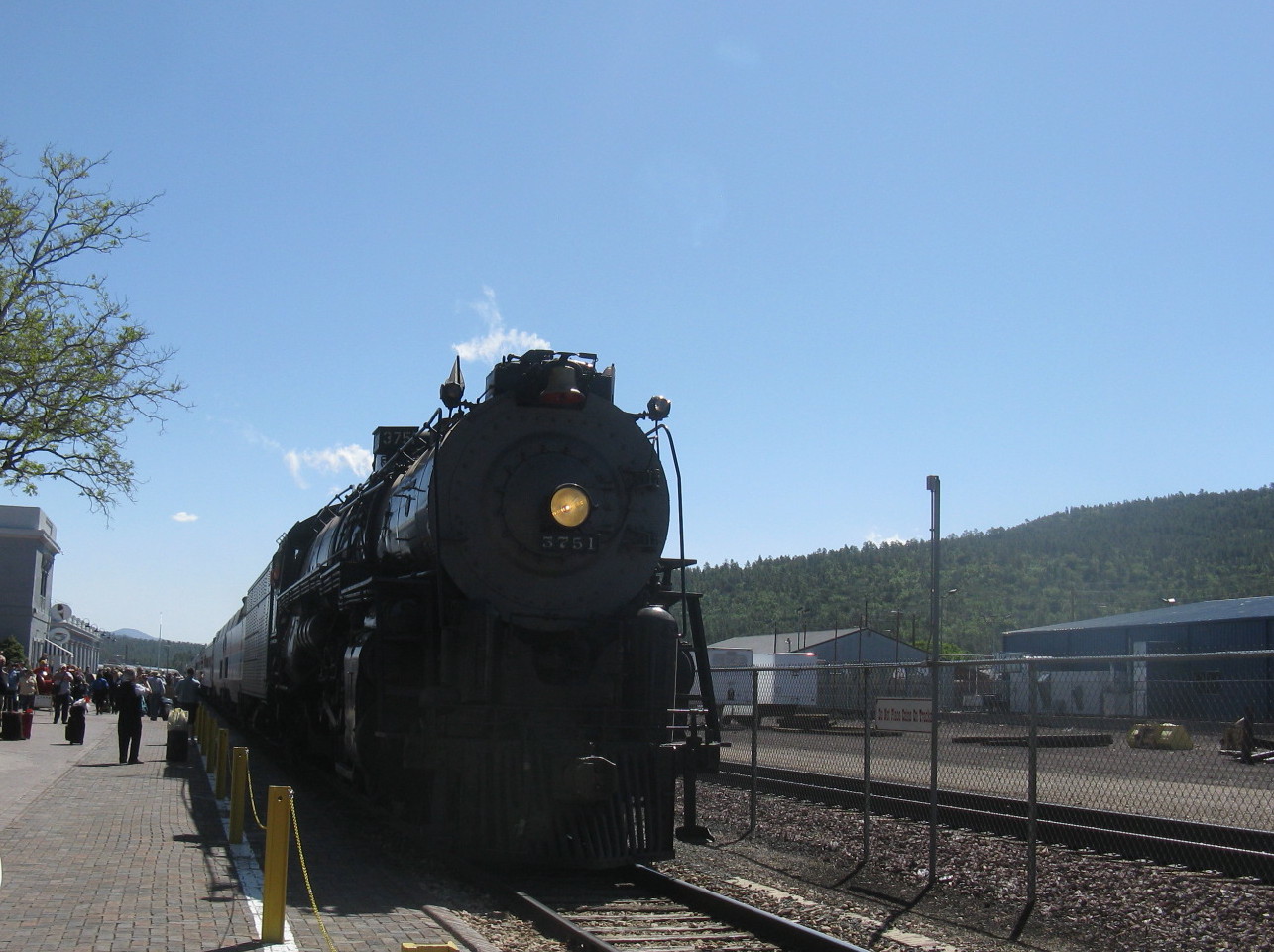 |
| The 10AM departure gave passengers the chance to see some of the landscape which had been passed in the darkness on the inbound trip. |
| The curving route gave ample opportunities for side shots of 3951. |
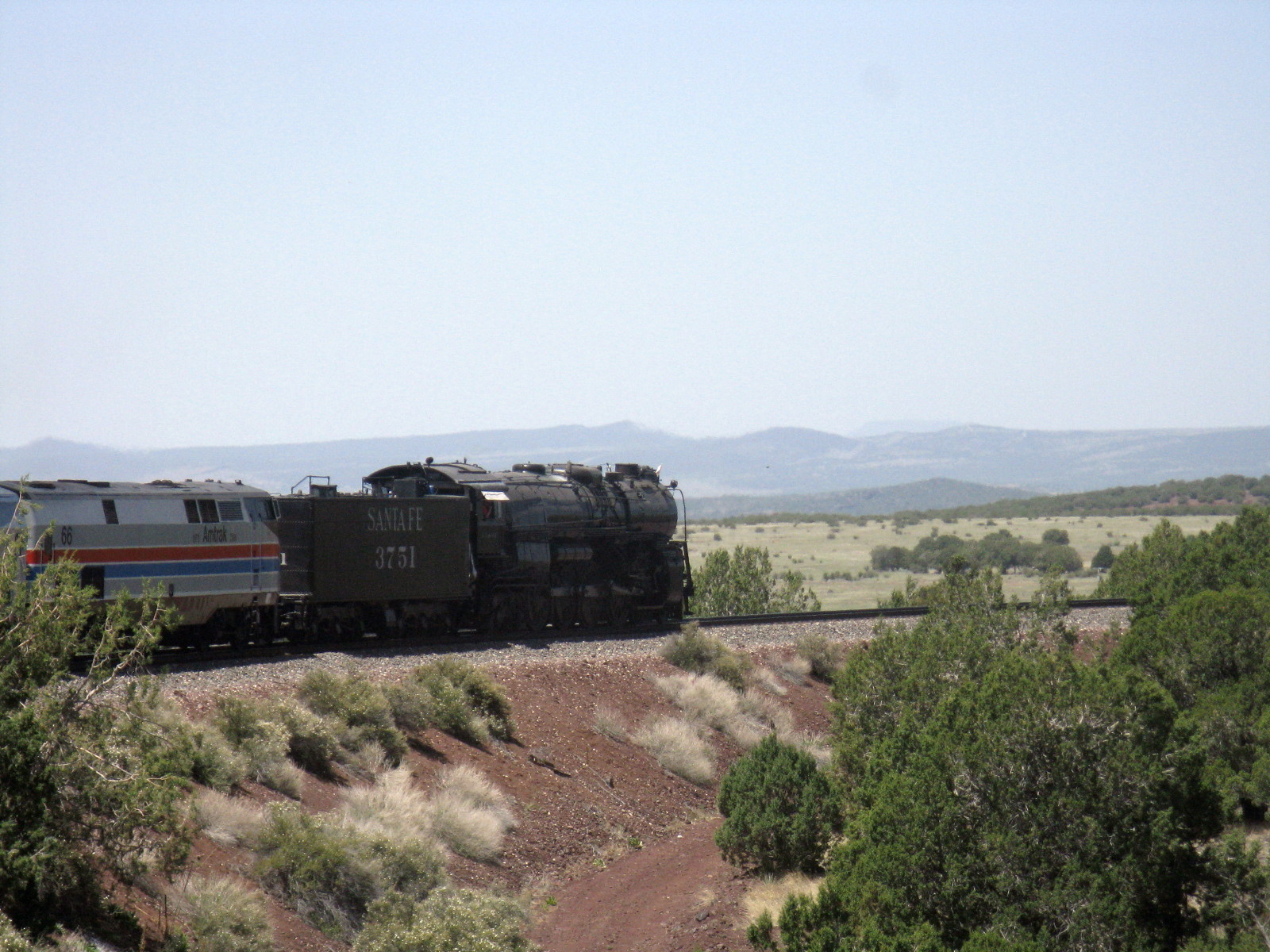 |
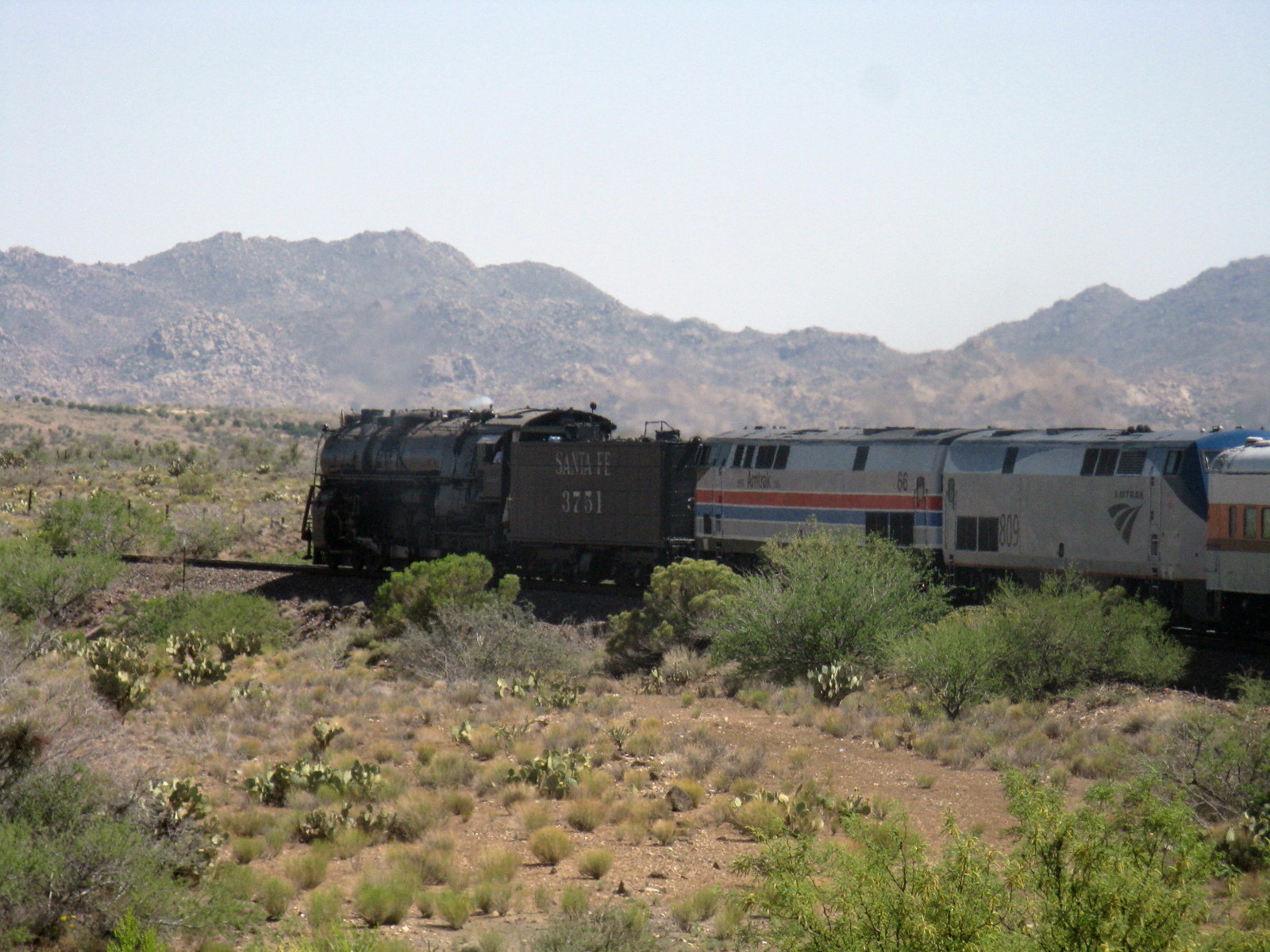 |
| The rusting Santa Fe water tank was a reminder of the difficulty of obtaining and storing water for the operation of steam locomotives in the desert. |
| At a service stop at the small desert town of Solome, when a passenger expressed a humorous wish for a beer, a sightseer on the ground quickly handed one up. |
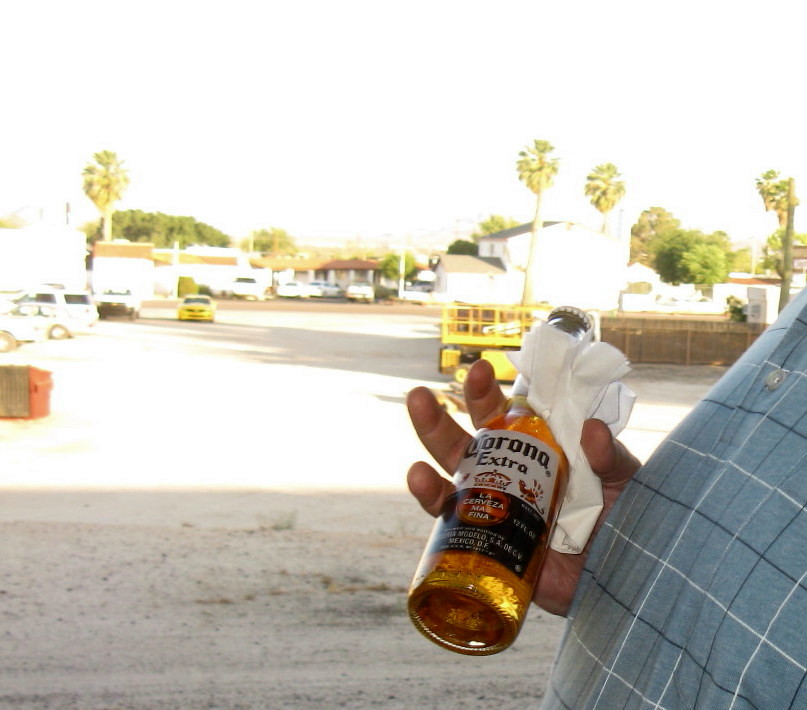 |
| Twilight again found the train far from its destination at Parker; arrival was close to midnight rather than the scheduled 7:30PM. |
| After leaving Parker at 8AM on Saturday morning, the train crossed the bridge over the Colorado River, marking the boundary between Arizona and California. |
| More slow desert running on the A&C lay ahead. |
| As we waited to rejoin the BNSF mainline at Cadiz Junction we were passed by this tank car train. |
| On this day’s stop at the Barstow station I was positioned to photograph an equipment display including ATSF FP45 cowl unit 95 and a “critter” of unknown origin. |
| My location also gave me a good view of UP freight operations in Barstow. |
| On Saturday’s return trip we crossed Cajon Pass in late afternoon; a few photographers were still present. |
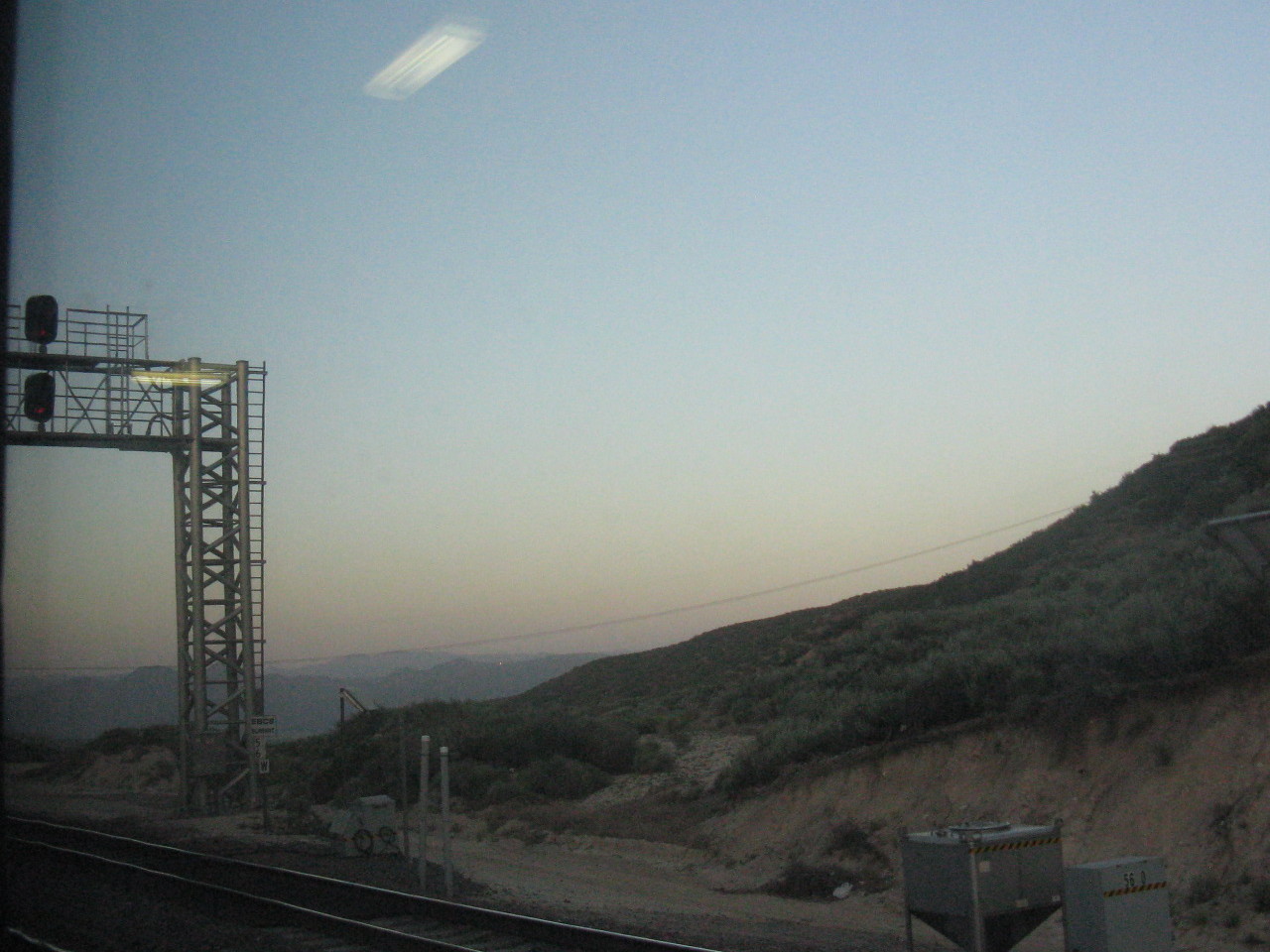 |
| Arrival in Los Angeles (at about 11PM) was still some hours away when I took my last picture. Despite the frustrations with slow running and a few other problems, I found the trip well worth taking, both for the scenery and for the experience of riding for several days behind steam in a train of mostly 1950’s equipment. |
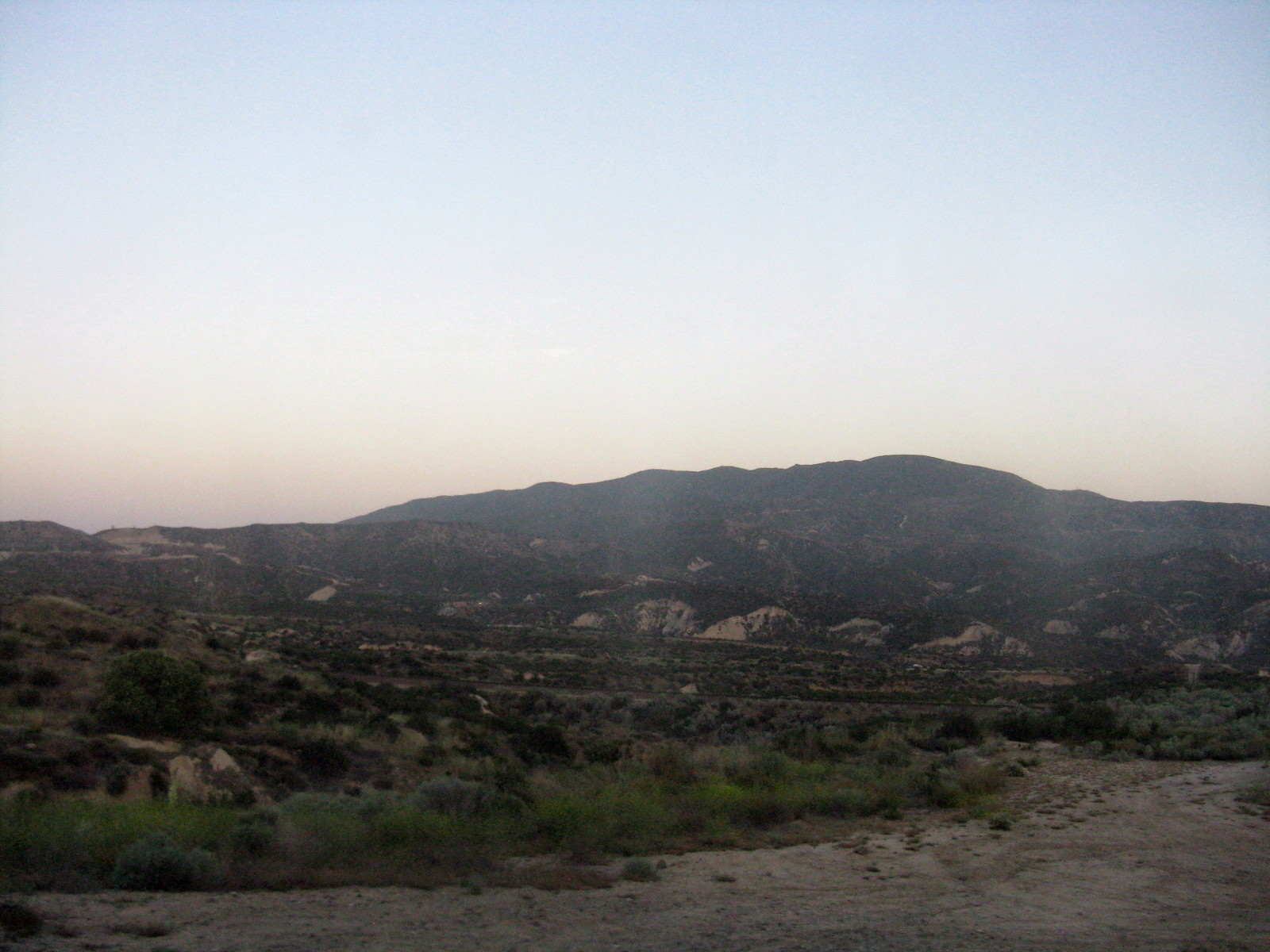 |
This page was designed and is maintained by Mike Condren.
If you have materials
that you would like to contribute, contact me at mcondren@cbu.edu